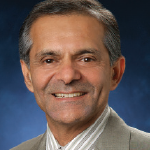The AMA House of Delegates (HOD) met in Chicago for its annual meeting June 9–14. More than 530 HOD members were present, with several hundred AMA and association staff and guests.
As I am sure you have noted from past issues of ACR@Work, the ACR is in its five-year membership review. The ACR must be represented in the AMA by at least 1,000 members to retain our seat on the HOD and participate in important AMA activities, such as the RUC and CPT Editorial Panel. Under the Rheumatology Strong! banner, we are reaching out to ACR members to renew their AMA membership or become members. As of the time of this report, we are within 100 members of making this threshold; we would like to significantly exceed it.
Important: I ask all ACR members to join/rejoin the AMA this week—if you have not already done so.
AMA Highlights
Andrew Gurman, MD, the outgoing president, highlighted the AMA’s advocacy efforts in multiple areas, such as ACA repeal and replacement. He talked about how the AMA is standing up for our patients and our profession. He also highlighted areas including a Coalition to Reform Prior Authorization and Utilization Management (of which the ACR is a founding member), the AMA Opioid Task Force, and the Medicare Quality Payment Program.
AMA Executive VP/CEO James Madara, MD, summarized progress during the fourth year of the five-year strategic plan for the AMA. To review, three key focus areas are:
- Improving health outcomes: The current focus is on improving outcomes in cardiovascular disease and type 2 diabetes. Efforts will be expanded to include a focus on the obesity epidemic.
- Accelerating change in medical education: In 2013, 11 schools received $1 million each in funding to implement projects to transform medical education. The second cohort of 20 schools was chosen in 2015, and each received $75,000 for a three-year project. The AMA also had a very public effort to sustain and/or increase funding for graduate medical education during the past year.
- Enhancing physician satisfaction and practice sustainability by shaping delivery and payment models: As a first step, the AMA collaborated with RAND Health, a respected national healthcare research firm, to identify the critical factors of success in care delivery and payment models that promote professional satisfaction and practice sustainability in different settings. This has led to the AMA STEPS Forward program with strategies, tools and resources to move forward.
Dr. Madara noted that each of these has been expanded. Three strategic arcs related to the above are to:
- Develop critical tools and policies for our field, such as the MACRA Action Kit and Payment Model Evaluator;
- Encourage lifelong professional development and physician growth; and
- Improve the health of the nation—specifically centering efforts on chronic diseases. The AMA is now working alongside additional partners like the Centers for Disease Control and American Hospital Association
The HOD passed a revised resolution regarding Maintenance of Certification (MOC). I testified on this issue following the assistance of the ACR’s MOC Task Force. This testimony was closely aligned with that of the representative of the Council on Medical Specialty Societies (CMSS). We moved forward strengthening AMA policy that states that MOC not be a requirement for medical staff membership and privileging, credentialing or re-credentialing, insurance panel participation, and state medical licensure.
ACR Representative Actions
The ACR sponsored or co-sponsored several resolutions, such as:
- A resolution to ensure an effective H-1B visa program to protect patient access to care. I am happy to report that it had unanimous support and was rolled into a larger substitute resolution regarding the importance of international graduates and the visa program. By the week after the meeting, the federal government had announced it would restart premium processing for physicians seeking this visa. This was a real win and showed the power of the ACR and AMA working together to leverage our results.
- A resolution to improve HRSA projections of the physician workforce. This came straight out of the 2015 ACR Workforce Study. It passed the HOD with only a minor amendment.
- Co-sponsoring an American Academy of Neurology (AAN) resolution regarding protections for patients with genetic conditions. In the end, the AAN chose to have current policy reaffirmed.
Additional Activities
I again attended a meeting sponsored by the Pennsylvania Medical Society (PAMED) that specifically continues to address issues with the progress—or lack thereof—of the American Board of Internal Medicine (ABIM) to revise its recertification requirements. This meeting focused on actions at the state legislative level, with societies and other interested parties attempting to get legislation passed that would not allow participation in MOC to be linked to licensing or credentialing, or hospital privileges and insurance panels. Speakers from Texas, Oklahoma, Michigan, Florida and Georgia all presented their perspectives.
We monitored and, in some instances, testified on various other resolutions of interest to our society and membership in the areas of drug shortages and exorbitant pricing, the opioid crisis, consultation code reinstatement, payments for out-of-network care and protecting individualized compounding in physician offices.
Our delegation continues to be active in the Specialty and Service Society (SSS), the Pain and Palliative Medicine Specialty Section Council and the ACP caucus. I am now past chair of the SSS and, therefore, remain on the Governing Council.
Overall, we had a very successful AMA HOD meeting. The delegation thanks all ACR members for your continued support of our involvement with the AMA, which furthers the interests of rheumatology and our patients.
Gary L. Bryant, MD, FACR, FACP, is chair of the ACR’s delegation to the AMA House of Delegates.
